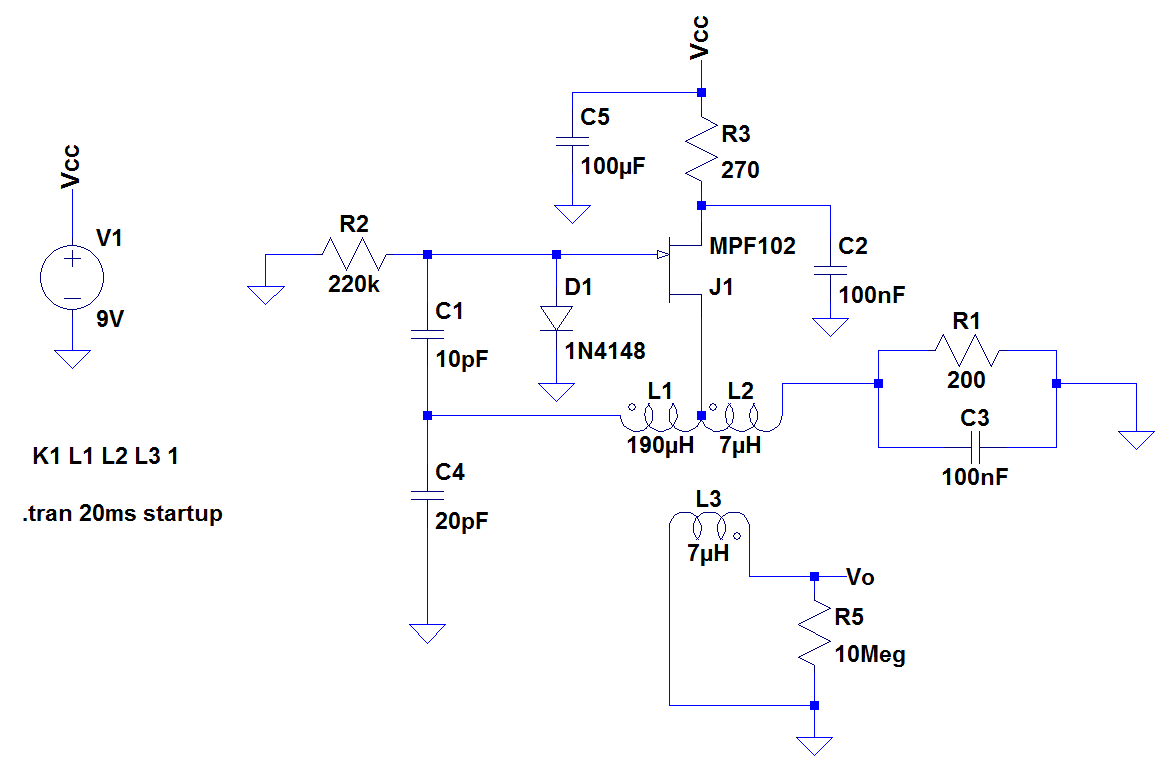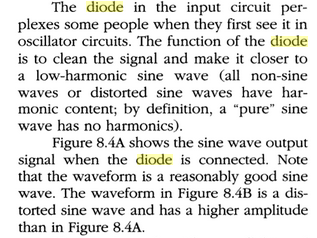This is something of a follow-up question to one I asked a few days back (Original JFET Hartley Question). Having made the changes suggested in the comments (i.e., changing Rd/R3 to 270 ohms, instead of 270k) and some basic biasing tweaks, I finally got the circuit oscillating on the board.
However, at the high end of the tuning range (around 2MHz), I noticed that the sine wave was distorted. Not grossly distorted, but it had flat tops and a slightly breaking wave shape. I felt the layout was adequate and I went looking for other problems with the circuit, turning to similar JFET designs (something I probably should have done at the start!)
The modified circuit I came up with was the following:
The resulting sine wave was very good, with little distortion throughout the tuning range. But, the single most effective change was the introduction of D1 at the gate of the JFET. I haven't had much luck looking for a decent explanation as to why this diode makes a difference.
The best I could find was this snippet from J Carr:
All very fine, but how exactly does it "clean the signal"?


